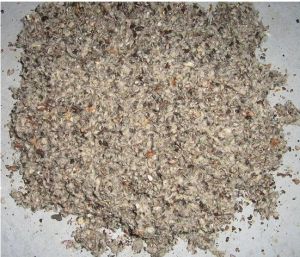
COTTONSEED WASHED OIL
This type of Cottonseed De-oiled Cake is obtained when cottonseed is processed through scientific method i.e. delinting, decortications, separation of hull, expelling and solvent extraction of oil from meal. Such cake contains almost negligible oil and has very high by-pass type protein content 38 to 40%. The Cottonseed meal/extraction contains protein as high as about 38 to 40% as compared to about 20 to 22% in traditionally prepared cottonseed cake. The protein content in the cattle feed is best utilized by the cattle if it by-passes its rumen (first part of the stomach) and is digested in the subsequent parts of the stomach. Such phenomena is known as “By-pass Protein”. It has been established that the protein content in Cottonseed Extractions is of “By-pass Protein” type. Decorticated Cottonseed Extraction is recognized all over the world as better cattle feed. In fact, undelinted undecorticated cottonseed cake is virtually an unknown product in the developed Countries. Cottonseed Extraction has also two other uses viz. fish feed and poultry feed. Based on the experience abroad, there is good scope for export of Cottonseed Extraction as poultry feed also. CAPOL has a vast capacity to supply De-oiled Cottonseed Cake and is scientifically proved to be the best feed for Cattle, which by-passes the digestion system. CAPOL produces around 25,000 MT per annum of its Animal Feed Plant, if so required by any business Associate.
...more
Cotton Linters
Even after employing the most efficient ginning process for recovery of lint from seed cotton, a certain amount of fuzz (very short fibers unsuitable for spinning) remains on the cottonseeds. This fuzz is known as “Cotton Linters”. The linters can be recovered by a special machine called “DELINTER”. If it is recovered in defibrators, another type of machine, it is known as “HULL FIBRES”. Delinters can remove the fuzz in a single passage or in two or three passages. The linters removed in a single passage are designated as “MILL RUNS” and if properly recovered, are usually composed of short and long fibres (2.5 to 12 mm long). If they are recovered in two passages, the first passage linters are known as 1st Cut Linters – usually 6 to 12 mm fibre length and the second passage linters are known as 2nd Cut Linters, usually having fibre length less than 5 to 6 mms. Some times the seeds are subjected to third passage and are known as 3rd Cut Linters having fibre length ranging between 2 to 3 1/2 mm. Recovery of linters from Cottonseed is about 4 per cent. USES: The Linters are used in the manufacture of paper, low grade absorbant cotton and in the mattress industry. Pure 1st Cut Linters are prized raw material for high grade bond, currency, low grammage tissues and filter paper. Bleached Cotton Linters are being used by our Ordinance Factories for production of propellants used for gun ammunition & also various missiles. For production of propellants, one of the basic explosive is Nitrocellulose(NC). Basic raw material for production of Nitrocellulose(NC) is Bleached Cotton Linters(BCL) which is produced out of raw cotton linters after processing. Further, bleached cotton can also be useful for surgical use as well as Felt making, Paper making and Cellulose Acetate, which is used in Rayan Fiber and Photographic Films etc. In U.S.A. the tissue papers prepared out of linters are reported in demand, especially by ladies for removal of make-up since it is not considered sensitive to the skin and is of organic origin. Market for such tissue papers can be developed in India also. CAPOL produces around 2,500 MT per annum of Cotton Linters, which are being exported to European Countries and East Asian Countries.
...more
cotton hulls
Cotton Hulls are outer covering of Cottonseeds. If the seed is delinted properly, black hulls are produced. Partially delinted semi-black seed yields “Semi Black Hulls”. The undelinted seed from fuzzy variety of seed produces “White Hulls”. USES: Roughage in cattlefeed, for diluting high protein cakes and extraction in the manufacture of compound cattlefeed, for reducing decorticated cottonseed meal/extraction with high protein content (48-50%) to the normal standard quality meal (40 to 42% protein), and also used in Petroleum drilling operations for filling the drilled holes to avoid caving in. Furfural alcohol can be manufactured from Cottonseed Hulls, as they possess as high as 12.5% to 13% of Furfural. Furfural is used in Paints and Plastics, Lignin used as a Soil Conditioner, Plastic filler and a source of Vanilla. CAPOL produces around 15,000 MT of Hulls every year, which can be increased as per the requirement of the customer.
...moreBe first to Rate
Rate This